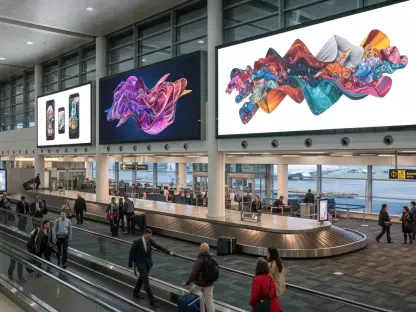In recent years, the radio industry has witnessed substantial growth in digital ad revenue, marking a new era where traditional broadcast relies heavily on digital advancements. Insights from Borrell Associates and the RAB’s annual benchmarking reports have consistently pointed to a pivotal shift in advertising trends. Digital revenue for radio surpassed the $2 billion mark, growing by 10.2%, and now represents a noteworthy 23.7% of the total ad revenue. Despite these impressive figures, there remains a significant untapped potential as only 28% of the average station’s radio advertisers are buying digital. This leaves a staggering 72% who have yet to explore digital advertising avenues offered by radio stations, highlighting a vast opportunity for further growth and strategic innovation.
Maximizing Digital Revenue through Training
The industry is responding with actionable steps to leverage this opportunity, recognizing the pressing need for robust digital training programs, the recruitment of digital-only sales representatives, and comprehensive updates to strategic plans. The emphasis on digital competency is clear, especially for video advertising, which has emerged as a dominant revenue source. Streaming video advertising not only helps radio stations to better compete with broadcast TV but also aligns with advertisers’ growing preference for video-centric strategies.
As reflected in recent studies, 58% of radio advertisers are actively exploring new advertising methods this year, with a strong inclination towards video advertising. Moreover, 78% of these advertisers express openness to purchasing video content from stations, showcasing a shift in advertising paradigms that radio groups must adapt to. This evolution underscores the critical role of professional development and training tailored to digital platforms, ensuring staff are equipped with the necessary knowledge and skills to secure more digital deals confidently.
Industry leaders such as Greg Davis Jr. of Davis Broadcasting and Linnae Young of Salem Media Group have highlighted the importance of dedicated training and specialized digital sellers. As Davis notes, investing in training empowers staff to harness digital tools effectively, thereby boosting the ability to close deals in an ever-competitive market. This trend towards multimedia sales perspectives and a diversified advertising toolbox signifies an essential shift in strategy, fostering enhanced efficacy among sales teams.
Strategic Shifts and Expertise Utilization
The transition toward digital-centric strategies is bolstered by the existing digital expertise within the radio industry. Radio salespeople rank second only to TV stations in terms of digital savvy, indicating substantial proficiency that can be further harnessed through strategic initiatives. This high level of expertise has already led to steady digital revenue growth, averaging at 4.1%, even amidst fluctuating projections over recent years. Such growth illustrates the essential nature of adapting to digital advertising trends when traditional radio ad sales show signs of decline. Consequently, pursuing digital revenue streams more aggressively is not merely an option but a necessity for sustained financial performance.
The successful integration of digital sales hinges on multifaceted approaches, including the development of strategic multimedia plans, focused digital training programs, and the recruitment of specialized sales professionals. By doing so, radio stations can exploit their existing digital knowledge while continuously evolving to meet advertiser demands. Additionally, recognizing and responding to the increasing preference for video content among advertisers, stations can create competitive advantages, positioning themselves effectively within the dynamic market landscape.
The voice of experience in the industry stresses the need to evolve beyond traditional practices. Young, from Salem Media Group, articulates this necessity by shifting towards multimedia perspectives. This transformation enriches the sales staff’s capabilities, enabling a more holistic approach to closing deals and nurturing advertiser relationships. Such strategic shifts, coupled with continued investment in training and digital expertise, pave the way for sustained growth and improved revenue streams in an increasingly digital-driven advertising environment.
Future Considerations and Evolving Trends
In recent years, the radio industry has experienced significant growth in digital ad revenue, marking a shift where traditional broadcast leans increasingly on digital advancements. Insights from Borrell Associates and the RAB’s annual benchmarking reports consistently highlight this pivotal change in advertising trends. Digital revenue for radio has exceeded $2 billion, growing by 10.2%, and now accounts for a notable 23.7% of total ad revenue. Despite these impressive statistics, a substantial opportunity remains untapped. Currently, only 28% of the average station’s radio advertisers purchase digital ads, leaving a staggering 72% who have yet to explore the digital advertising platforms provided by radio stations. This scenario signals a vast potential for further growth and strategic innovation within the industry. Building on this momentum could revolutionize the sector, transforming how advertisers and stations interact, thereby continuing to bridge traditional and digital media in innovative ways.









